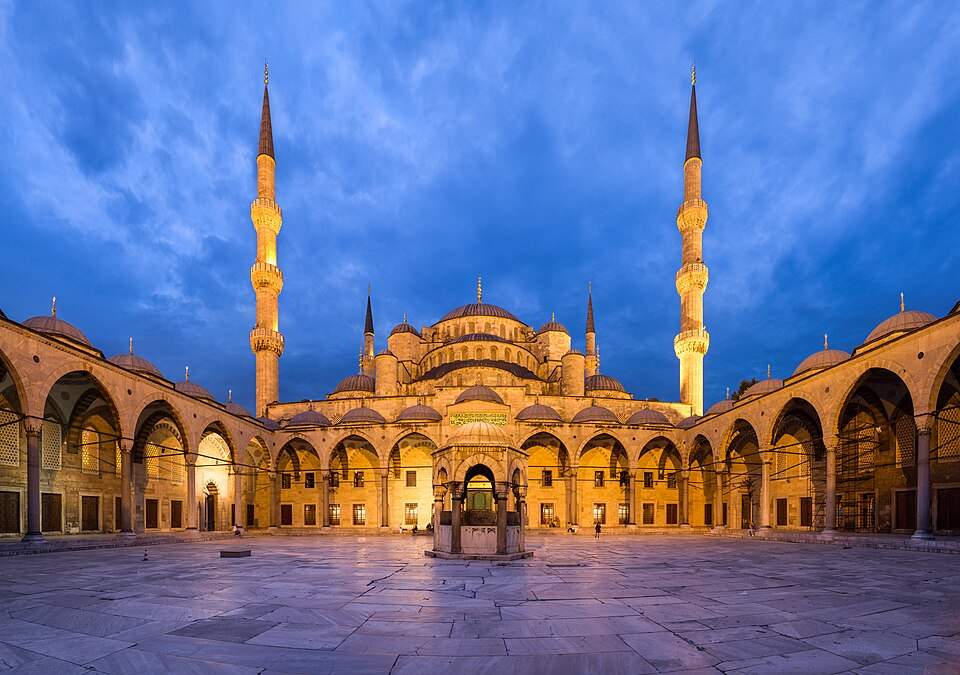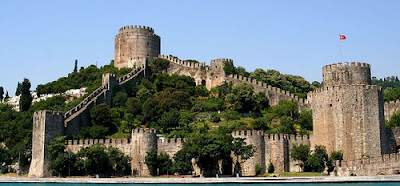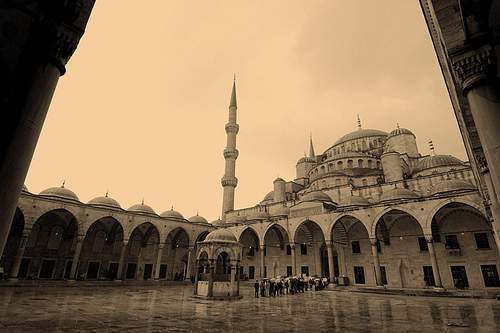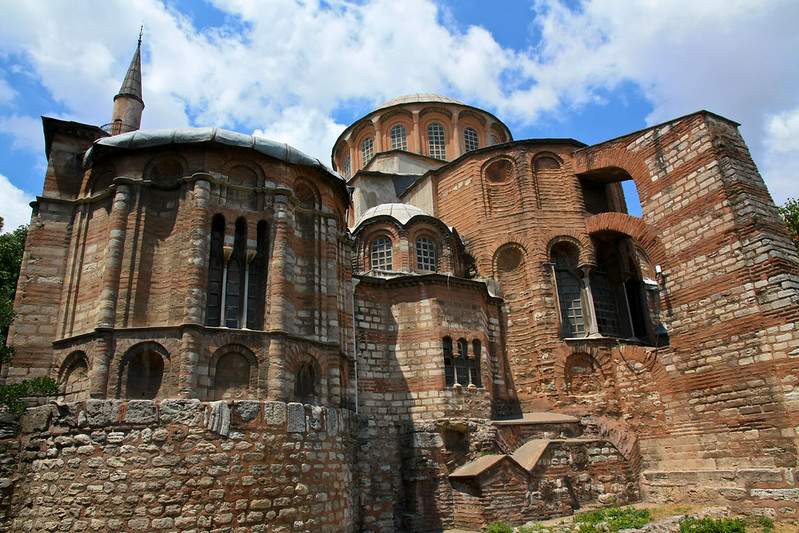Standing at the crossroads of Europe and Asia, Istanbul isn’t just a city—it’s a living, breathing museum where every cobblestone whispers secrets of empires that once ruled the known world. I mean, where else can you walk from a 1,500-year-old underground cistern to an Ottoman palace that housed sultans for four centuries, all before lunch?
Having spent countless hours exploring these historic sites (and perhaps getting wonderfully lost in the process), I can tell you that Istanbul’s historical places aren’t just tourist attractions—they’re time machines. Each site tells a story that’s been unfolding for over two millennia, from Roman emperors to Byzantine Christianity, from Ottoman grandeur to modern-day Turkey.
Whether you’re planning your first visit or returning to uncover hidden gems you missed before, this comprehensive guide will take you through the most spectacular historical sites that have shaped not just Istanbul, but the entire course of human civilization.
The Crown Jewels: Istanbul’s Most Iconic Historical Sites
Hagia Sophia: Where Divine Meets Imperial
Let’s start where most journeys through Istanbul’s history begin—at Hagia Sophia. Standing before this architectural marvel, you can’t help but feel dwarfed by its massive dome that seems to float 180 feet above your head, defying both gravity and time itself.
Built in 537 AD under Byzantine Emperor Justinian I, Hagia Sophia was the world’s largest cathedral for nearly a thousand years. The statistics are staggering, sure, but what really gets you is walking inside and seeing Christian mosaics of Jesus and the Virgin Mary existing alongside Islamic calligraphy—a testament to the complex layers of faith and conquest that define Istanbul.
Here’s something most visitors don’t realize: the best time to experience Hagia Sophia is actually just after sunrise, around 7 AM, when golden light streams through the windows and illuminates those famous Byzantine mosaics. The crowds haven’t arrived yet, and you can almost hear the echoes of centuries-old prayers.
Practical tip: Entry is free, but expect lines during peak hours (10 AM – 4 PM). The upper galleries, where you’ll find the most stunning mosaics, require a separate entrance that many people miss entirely.
Blue Mosque: Ottoman Architecture at Its Finest

Just across from Hagia Sophia stands the Sultan Ahmed Mosque, better known as the Blue Mosque—and honestly, the nickname doesn’t do it justice. Those aren’t just “blue tiles” decorating the interior; they’re over 20,000 handcrafted Iznik tiles in dozens of shades of blue, creating what feels like stepping inside a sapphire.
Built between 1609-1616 during Sultan Ahmed I’s reign, the mosque was intentionally designed to rival Hagia Sophia’s grandeur. The result? Six minarets (instead of the usual four) and an interior space that manages to feel both vast and intimate. I think what strikes me most is how the natural light filtering through 260 windows creates an almost ethereal atmosphere inside.
The mosque is still active for worship, which means it closes five times daily for prayers—roughly 90 minutes total. Prayer times vary seasonally, but you can usually visit between 9 AM and 6 PM with breaks. Our complete Blue Mosque guide includes updated prayer schedules and photography tips.
Visitor etiquette: Dress modestly (long pants for men, head covering and long sleeves for women—scarves are provided), remove shoes before entering, and maintain respectful silence. Free entry, but donations are appreciated.
Topkapi Palace: Four Centuries of Ottoman Power
If you want to understand Ottoman grandeur, Topkapi Palace is your gateway to a world where sultans once ruled an empire spanning three continents. This sprawling complex covers nearly 175 acres—that’s bigger than most small towns—and served as the primary residence of Ottoman sultans for over 400 years.
Walking through the palace’s four main courtyards feels like peeling back layers of history. The First Courtyard was where anyone could enter (imagine that level of accessibility for a royal palace), while the Fourth Courtyard was reserved for the sultan’s most private moments. The Sacred Relics section houses artifacts from Prophet Muhammad, making it one of Islam’s most important pilgrimage sites.
Perhaps the most fascinating section is the Harem, where the sultan’s family lived in elaborate chambers that could house up to 1,000 people. The intricate tile work and architectural details here rival anything you’ll see in Europe’s royal palaces. Our detailed Topkapi Palace guide breaks down each section and helps you navigate the complex efficiently.
Essential info: Combined tickets (Palace + Harem + Hagia Irene) cost around 1,700 TL (about $45). Open 9 AM-6 PM in summer, 9 AM-4:30 PM in winter, closed Tuesdays. Budget 3-4 hours minimum—this place is huge.
Basilica Cistern: Istanbul’s Underground Cathedral
Descending into the Basilica Cistern feels like entering another world entirely—a subterranean cathedral where 336 marble columns reflect in dark, still waters. Built in 532 AD to supply water to the Byzantine palace, this underground marvel could store 80,000 cubic meters of water. That’s roughly equivalent to 32 Olympic swimming pools, if you can picture that.
What makes the cistern truly mysterious are the two Medusa head columns—ancient Roman capitals carved with the gorgon’s face, placed upside down and sideways for reasons historians still debate. Some say it was to neutralize Medusa’s power, others believe it was simply practical reuse of available materials. Standing there in the dim, atmospheric lighting, you can decide for yourself.
The cistern was actually “lost” for centuries until a French scholar rediscovered it in 1544 after locals told him they could fish through holes in their basement floors. Can you imagine having this architectural wonder literally beneath your house and not knowing it? Our comprehensive Basilica Cistern guide covers the fascinating rediscovery story and hidden details most visitors miss.
Visiting tips: Entry costs around 600-900 TL depending on season. Open daily 9 AM-6 PM. The cistern gets crowded midday, so early morning or late afternoon visits offer better photo opportunities and a more contemplative experience.
Ottoman Empire Historical Treasures
Rumeli Fortress: The Conqueror’s Strategic Masterpiece
Perched on the European shore of the Bosphorus, Rumeli Fortress represents one of history’s most successful military strategies. Sultan Mehmed II, later known as “the Conqueror,” built this fortress in just four months during 1452—an incredibly short time for such a massive undertaking.
The fortress wasn’t just built quickly; it was built smart. Positioned at the narrowest point of the Bosphorus (just 700 meters wide here), it could control all naval traffic to and from the Black Sea. Combined with the earlier Anadolu Fortress on the Asian side, these two fortifications effectively strangled Constantinople’s supply lines, contributing to the city’s fall in 1453.
Today, climbing the fortress towers offers some of Istanbul’s best panoramic views. You can see the Bosphorus Bridge, the Asian coastline, and understand exactly why this location was so strategically crucial. It’s particularly stunning at sunset when the golden light hits the water and the fortress stones. Our Rumeli Fortress guide includes the best photography spots and lesser-known historical details.
Historical note: About 1,000 workers (including 300 master craftsmen) built the fortress using stones from Byzantine ruins. After Constantinople’s conquest, it served as a customs checkpoint, then a prison, and is now an open-air museum.
Süleymaniye Mosque: Mimar Sinan’s Masterpiece
While tourists flock to the Blue Mosque, locals will tell you that Süleymaniye Mosque is Istanbul’s true architectural crown jewel. Designed by the legendary Ottoman architect Mimar Sinan and completed in 1558, it’s considered one of the finest examples of Islamic architecture anywhere in the world.
The mosque complex originally included a hospital, schools, a soup kitchen, and bathhouses—essentially a complete social services center. Süleyman the Magnificent, who commissioned the mosque, is buried in the adjacent cemetery alongside his wife Roxelana, making this both an architectural and historical pilgrimage site.
What I find remarkable is how Sinan solved the acoustic challenges that plagued other large mosques. The dome’s design ensures that prayers can be heard clearly from every corner without amplification—a feat of engineering that modern architects still study today.
Visitor experience: Free entry, open daily except during prayers. Less crowded than Blue Mosque, offering a more authentic worship experience. The terrace behind the mosque provides excellent Bosphorus and Golden Horn views.
Byzantine Heritage and Ancient Constantinople
Chora Church (Kariye Museum): Byzantine Art at Its Peak
Hidden away in the Fatih district, the Chora Church contains what many consider the finest Byzantine mosaics and frescoes in existence. Originally built in the 4th century and reconstructed in the 11th-14th centuries, the church survived the Ottoman conquest and remained relatively unchanged—a miracle considering how many Byzantine structures were demolished or converted.
The mosaics here are extraordinary in their detail and emotional expression. The depiction of Christ’s life covers nearly every surface, with faces so lifelike you expect them to speak. The “Anastasis” fresco in the apse, showing Christ’s resurrection, is particularly powerful—it’s been called the greatest painting of the Byzantine era.
Unlike the major tourist sites, Chora Church feels like a discovery. You might find yourself alone with these thousand-year-old masterpieces, contemplating how artists created such beauty with limited tools and materials. Our Byzantine sites guide includes detailed descriptions of the most important mosaics and their biblical significance.
Current status: Recently converted back to a mosque, but the mosaics remain visible. Check current visiting hours and protocols before traveling.
Hippodrome: Where Emperors Entertained the Masses
Today’s Sultanahmet Square sits atop what was once the Hippodrome of Constantinople, the Byzantine Empire’s premier venue for chariot races and public gatherings. Built by Emperor Constantine in the 4th century, it could hold 100,000 spectators—larger than most modern football stadiums.
Three ancient monuments still stand in the square’s center: the Obelisk of Theodosius (originally from Egypt’s Karnak Temple), the Serpent Column (from Delphi in Greece), and the Walled Obelisk. These monuments have witnessed the rise and fall of empires, serving as silent observers to over 1,500 years of history.
The square’s layout helps you visualize the original Hippodrome’s massive scale. Walking from one end to the other, you’re traversing what was once the arena floor where Byzantine Blues and Greens (rival chariot racing factions) competed so fiercely that their rivalry sometimes erupted into city-wide riots.
Cistern of Philoxenos: The Lesser-Known Underground Marvel
While everyone visits the Basilica Cistern, few discover the Cistern of Philoxenos (Binbirdirek Cistern), located just 300 meters away. Built in the 4th century, it’s actually older than its famous neighbor and offers a more intimate underground experience.
The cistern gets its Turkish name “Binbirdirek” (thousand and one columns) from its 224 columns—not quite a thousand, but impressive nonetheless. What makes this cistern special is its better preservation state and the fact that you can often explore it without crowds, creating an almost meditative underground experience.
Recent archaeological work has revealed that this cistern was larger than previously thought, with sections still being excavated. It’s a reminder that Istanbul still holds secrets beneath its streets, waiting to be discovered.
Museums and Archaeological Treasures
Istanbul Archaeological Museums: Three Museums, Countless Treasures
The Istanbul Archaeological Museums complex actually comprises three separate museums: the main Archaeological Museum, the Museum of the Ancient Orient, and the Tiled Kiosk Museum. Together, they house over one million artifacts spanning civilizations from ancient Mesopotamia to the Ottoman Empire.
The crown jewel of the collection is the Alexander Sarcophagus (though Alexander the Great wasn’t actually buried in it—it belonged to Abdalonymus, King of Sidon). The intricate battle scenes carved into the marble are so detailed you can see individual facial expressions of ancient warriors.
In the Museum of the Ancient Orient, cuneiform tablets from Mesopotamia tell stories that are thousands of years older than the Bible. The Tiled Kiosk, Istanbul’s oldest surviving building from the Ottoman period (1472), showcases the evolution of Ottoman ceramic art. Our Archaeological Museums guide helps you navigate the highlights efficiently—you could spend days here otherwise.
Practical details: Entry fee is €15 (about 565 TL). Open 9 AM-9 PM in summer, 9 AM-6:30 PM in winter. Plan for at least 3 hours to see the highlights properly.
Museum of Turkish and Islamic Arts: Carpets, Calligraphy, and Culture
Housed in the former palace of Ibrahim Pasha (Süleyman the Magnificent’s grand vizier), this museum offers insights into Islamic artistic traditions across different periods and regions. The carpet collection is particularly extraordinary, including some of the world’s oldest and finest examples.
The ethnographic section recreates traditional Turkish homes from different regions and time periods, providing context for how ordinary people lived throughout Ottoman history. It’s a nice counterbalance to the imperial grandeur of the palaces.
Planning Your Historical Istanbul Adventure
Best Times to Visit Historical Sites
Timing can make or break your experience at Istanbul’s historical sites. Generally, early mornings (8-10 AM) and late afternoons (after 4 PM) offer the best combination of smaller crowds and good lighting for photography.
Spring (April-May) and fall (September-October) provide ideal weather conditions—warm enough for comfortable walking but not so hot that you’re wilted by midday. Summer can be brutally hot and crowded, while winter offers fewer crowds but shorter daylight hours and potential weather delays.
For specific sites, consider these patterns: Hagia Sophia is least crowded early morning and during prayer times at the nearby Blue Mosque. Topkapi Palace is most manageable on weekday mornings. The Basilica Cistern’s atmospheric lighting is most dramatic in late afternoon.
Pro tip: Many sites offer reduced prices or special access with the Istanbul Museum Pass, which costs around €85 and includes entry to 12 major attractions plus skip-the-line privileges. Our 2025 tickets and prices guide compares individual vs. pass pricing for different itinerary lengths.
Navigating Between Historical Sites
Most of Istanbul’s major historical sites cluster in the Sultanahmet (Old City) area, making them walkable if you plan efficiently. A typical walking route might include: Hagia Sophia → Blue Mosque → Basilica Cistern → Topkapi Palace → Archaeological Museums, all within a 1.5-kilometer radius.
For sites outside Sultanahmet (like Chora Church, Süleymaniye Mosque, or Rumeli Fortress), Istanbul’s public transit system is extensive and affordable. The T1 tram line connects major historical areas, while buses and metro lines reach more distant sites.
Taxis are convenient but traffic can be unpredictable, especially crossing the Golden Horn or Bosphorus. During rush hours, walking or taking the tram might actually be faster than driving.
What to Expect: Crowds, Queues, and Cultural Considerations
Let’s be honest—Istanbul’s major historical sites can get crowded, especially during cruise ship season (April-October) and holiday periods. The Blue Mosque and Hagia Sophia see the heaviest traffic between 10 AM and 4 PM.
For active mosques (Blue Mosque, Süleymaniye), dress codes are strictly enforced. Women need to cover heads, arms, and legs; men should wear long pants. Shoes must be removed before entering prayer areas. Free scarves and shoe bags are typically provided.
Photography is generally allowed in most sites, but flash photography may be restricted to preserve artifacts and maintain atmosphere. Some areas (like Topkapi Palace’s Sacred Relics section) prohibit photography entirely.
During Ramadan, visiting hours and crowd patterns change significantly. Some sites close earlier, while others may have extended evening hours after iftar (breaking the fast).
Hidden Gems and Lesser-Known Historical Sites
Fethiye Museum (Pammakaristos Church)
This 11th-century Byzantine church survived Ottoman conquest and now serves as a museum showcasing some of Istanbul’s best-preserved Byzantine mosaics. The building itself tells the story of Istanbul’s religious evolution—originally a church, later converted to a mosque, and now a museum.
The mosaics here rival those at Chora Church but see far fewer visitors. The Pantocrator dome mosaic is particularly stunning, showing Christ surrounded by Old Testament prophets in remarkable detail.
Ahrida Synagogue: Istanbul’s Oldest Active Synagogue
Built in the 15th century by Sephardic Jews fleeing Spanish persecution, Ahrida Synagogue represents Istanbul’s multicultural heritage. The interior features a unique boat-shaped bimah (reading platform) and beautiful painted decorations that blend Ottoman and Jewish artistic traditions.
Visits require advance arrangement through Istanbul’s Chief Rabbinate, but it’s worth the effort to understand how different religious communities coexisted in Ottoman Istanbul.
Galata Tower: Medieval Watchtower with Modern Views
Originally built by Genoese colonists in 1348, Galata Tower served as a fire watchtower during Ottoman times. Today, it offers 360-degree panoramic views of Istanbul from its observation deck 67 meters above sea level.
The tower’s strategic location in the Galata district provides perspectives you can’t get from anywhere else—particularly stunning views of the Old City’s silhouette across the Golden Horn.
Connecting Istanbul’s Historical Narrative
From Roman Foundations to Ottoman Glory
What makes Istanbul’s historical sites so compelling isn’t just their individual significance, but how they connect to tell the story of one of the world’s most important cities. The Roman foundations, Byzantine innovations, and Ottoman grandeur layer upon each other, creating a urban landscape where every era remains visible.
Understanding these connections enhances every site visit. When you see the Hagia Sophia’s Christian mosaics alongside Islamic calligraphy, you’re witnessing the moment when Constantinople became Istanbul. The Hippodrome’s Egyptian obelisk reminds you that this was the capital of an empire spanning three continents.
Our Ottoman Empire sites collection traces how Islamic architecture evolved in the city, while our Byzantine heritage guide explores the earlier Christian period that shaped the city’s character.
Modern Preservation Efforts
Istanbul’s historical sites face ongoing challenges from urban development, tourism pressure, and natural disasters. Recent restoration projects at Hagia Sophia and the Basilica Cistern have sparked international debate about balancing preservation with contemporary use.
UNESCO World Heritage status protects many sites, but rapid urban growth continues to threaten archaeological areas. Some argue that increased tourism provides funding for preservation; others worry that too many visitors damage these irreplaceable monuments.
As travelers, we bear responsibility for visiting these sites respectfully and supporting preservation efforts. This might mean choosing less crowded times, following photography guidelines, or selecting tour operators who contribute to conservation.
Beyond the Major Sites: Exploring Istanbul’s Historical Neighborhoods
Fener and Balat: Byzantine and Ottoman Residential Heritage
These adjacent neighborhoods along the Golden Horn preserve the feel of Ottoman-era Istanbul. Narrow cobblestone streets wind between colorful houses that have housed Greek Orthodox, Jewish, and Muslim families for centuries.
The Ecumenical Patriarchate of Constantinople, spiritual center of Eastern Orthodox Christianity, still operates here. Meanwhile, restored Ottoman houses now serve as boutique hotels and cafes, offering glimpses into domestic life during the empire’s height.
Eyüp: Sacred Islamic Heritage
The Eyüp district, built around the tomb of Abu Ayyub al-Ansari (a companion of Prophet Muhammad), represents Istanbul’s most important Islamic pilgrimage site. The Eyüp Sultan Mosque complex draws Muslim visitors from around the world.
The nearby Pierre Loti Hill offers spectacular views of the Golden Horn and provides perspective on how the city’s sacred geography shaped its development. Ottoman cemeteries covering the hillsides create one of the world’s most beautiful burial grounds.
Practical Advice for the Modern Historical Explorer
Technology and Traditional Exploration
While smartphone apps and audio guides enhance historical site visits, don’t let technology replace direct observation and contemplation. Some of history’s most powerful moments come from simply standing quietly in these ancient spaces and letting your imagination fill in the details.
That said, augmented reality apps for sites like Hagia Sophia can help visualize how spaces looked during different periods. QR code systems at many sites provide detailed information in multiple languages.
Sustainable Historical Tourism
Consider visiting during shoulder seasons (March-April, October-November) to reduce pressure on popular sites. Support local businesses around historical areas—many have operated for generations and add authenticity to the historical experience.
Choose accommodations in historic neighborhoods like Sultanahmet or Galata to reduce transportation needs and immerse yourself in the city’s historical atmosphere. Our seasonal guide helps you plan visits that balance your interests with sustainable tourism practices.
The Living Heritage of Istanbul
Perhaps what I find most remarkable about Istanbul’s historical sites is that they remain part of a living city. These aren’t museum pieces preserved under glass—they’re active parts of a metropolitan area home to over 15 million people. The Blue Mosque still calls faithful to prayer five times daily. The Bosphorus still carries cargo ships and ferries past Ottoman fortresses. Street vendors still sell roasted chestnuts in the shadow of Byzantine walls.
This integration of ancient and modern creates an urban experience unlike anywhere else in the world. You might attend a concert in a 6th-century cistern, browse a market that’s operated continuously for 500 years, or sip tea while watching ferries pass beneath bridges built where ancient emperors once crossed.
As you explore Istanbul’s historical sites, remember that you’re not just seeing the past—you’re experiencing how history continues to shape daily life in one of the world’s great cities. Every monument, museum, and mosque remains connected to the living story of Istanbul, making your visit part of that ongoing narrative.
Whether you have three days or three weeks, Istanbul’s historical sites offer layers of discovery that reward both casual visitors and serious history enthusiasts. Each site connects to others, creating a web of stories that spans civilizations and centuries. Your journey through these historical places isn’t just sightseeing—it’s time travel through some of humanity’s most significant chapters.
Take your time, ask questions, and let Istanbul’s history work its magic on you. After all, these stones have been waiting centuries to tell their stories—they can wait a little longer while you truly listen.





